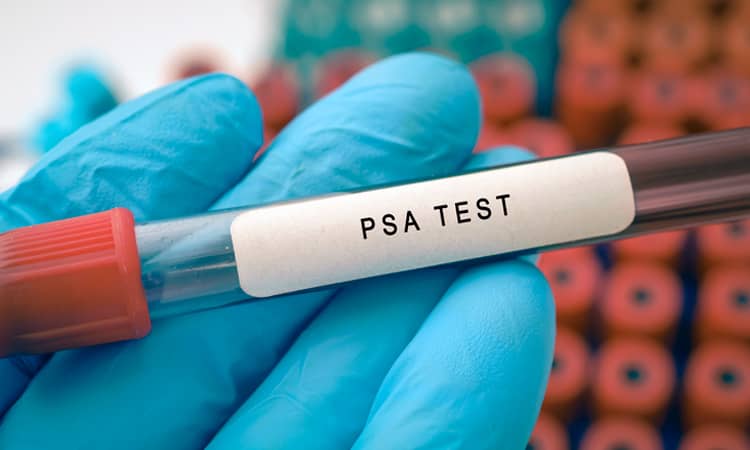Normal PSA Levels, Guidelines & Recommendations by Age
More information regarding what is considered a normal PSA level as well as how age is a factor in recommendations for elevated PSA (Prostate Specific Antigen).
What is considered a normal PSA level?
A PSA test must be interpreted on an individual basis for risk, as there are several factors that can affect the level observed. In general, low-risk or normal results are less than 2.0 ng/mL while PSA levels ranging from 2.0 to 10.0 ng/mL are considered to be in the "gray zone". The gray zone indicates the biopsy decision is not black or white and must be considered carefully. Patients with PSA levels in the gray zone can benefit from the ExoDxTM Prostate Test which provides an additional data point independent of PSA and other clinical factors. PSA levels over 10.0 ng/mL are in a high-risk zone and could be a sign of prostate cancer.

Guidelines & Limitations of PSA Screening
Prostate Specific Antigen (PSA) screening is part of the standard
of care (SOC) for prostate cancer risk assessment. The United States of Preventive Services Task Force (USPSTF) changed its guidelines in 2018 advising men 55-69 years of age to make an informed choice and discuss with their doctor whether screening is right for them.
- PSA is not cancer specific and levels can be increased by noncancerous conditions such as benign prostatic hyperplasia (BPH), prostatic inflammation or lower urinary tract infection
- When PSA results are in the “gray zone”, other factors such as age, family history, ethnicity and digital rectal examinations are important
- PSA does not distinguish high-grade from low-grade prostate cancer and is not prostate cancer-specific

The widespread introduction of PSA screening in the late
1980s was critical for identifying prostate cancer early
in the disease course and has resulted in a reduction in
prostate cancer mortality. However, results from two large
randomized clinical trials identified the unintended harms
of overdiagnosis and overtreatment of indolent prostate
cancer.
History of PSA Screening and Guidelines by Age
In 2012, the USPSTF Recommendation Statement on Prostate Cancer Screening highlighted that one in nine American men will be diagnosed with prostate cancer during his lifetime. Prostate cancer (PCa) is the second leading cause of cancer death among American men and is the most commonly diagnosed cancer. The American Cancer Society estimated that 191,930 men would be diagnosed with prostate cancer in 2020 and projected that ~33,000 men would die from the disease. Currently, about 3.6 million American men are living with PCa -- only slightly less than the population of Los Angeles.
According to a recent publication by the American Cancer Society, published in the Journal of the National Cancer Institute, following the 2012 USPSTF recommendations against routine PSA screening, while local disease decreased in age groups 50-74 and similarly in individuals 75 years and older, invasive forms of PCa (regional and distant) continue to increase in the US in men aged ≥50 years.
While a uniform recommendation against screening can reduce overdiagnosis and overtreatment of indolent, low-risk disease, such an approach also misses the diagnosis of high-risk disease, for which treatment is effective in decreasing mortality. A more nuanced risk-stratified approach is required to improve patient outcomes and reduce mortality due to PCa. Focus has shifted to discriminating high-grade prostate cancer (HGPCa) (GGgreater than or equal to sign2), and especially dominant pattern 4 disease (greater than or equal to signGG3), from low-grade PCa and benign tissue. This screening strategy has the potential to maintain the mortality reduction benefits of PSA screening while reducing harm from the over-detection and overtreatment of low-grade, indolent PCa.